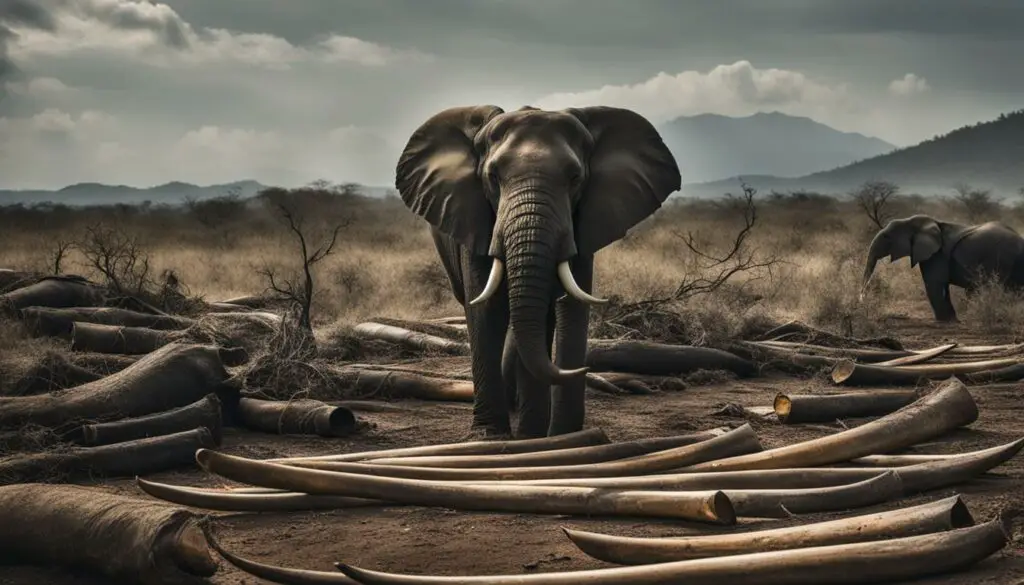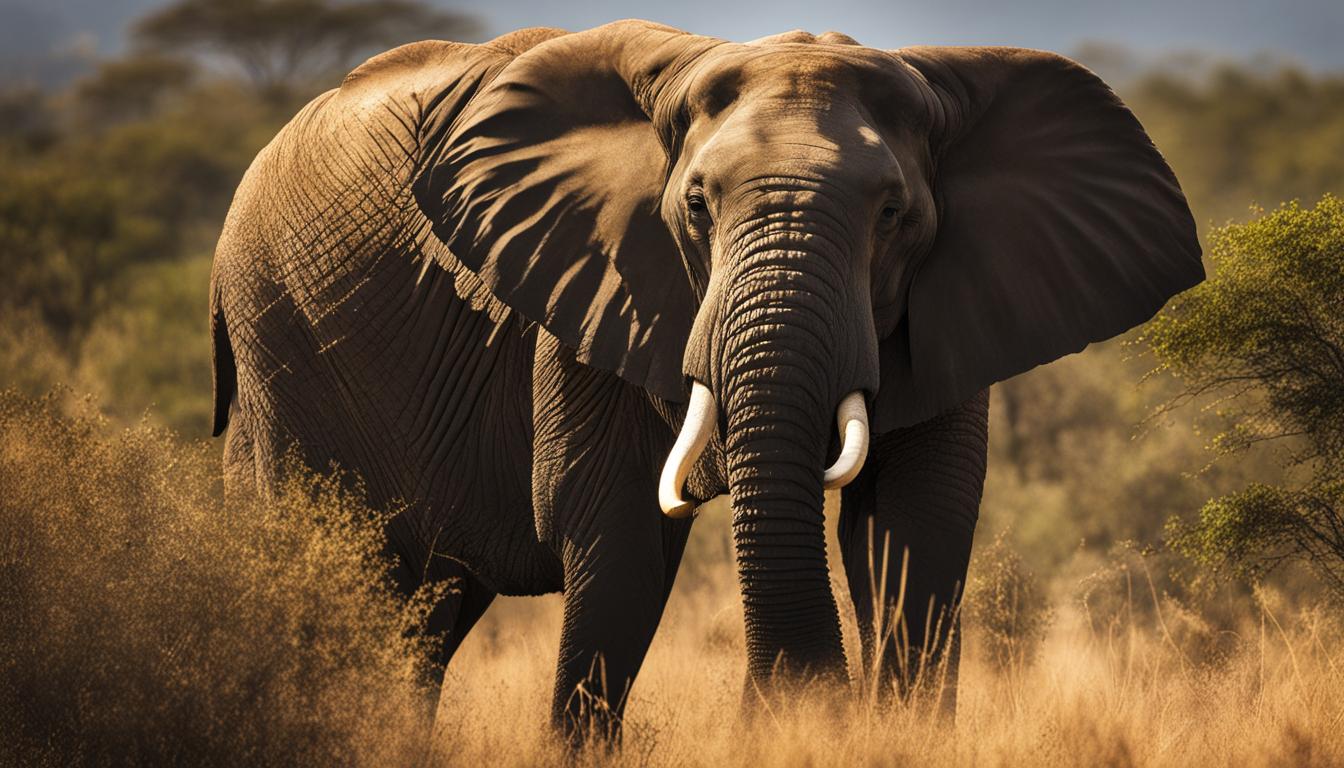Have you ever wondered why some elephants have those magnificent tusks? Well, let’s delve into this fascinating topic and explore the purpose and significance of elephant tusks. From their size to their function, elephant tusks are truly remarkable.
Elephant tusks are not just ordinary teeth; they are actually elongated incisors that continue to grow throughout an elephant’s life. In African elephants, both males and females have tusks, while in Asian elephants, only the males possess them. These incredible appendages serve a multitude of purposes.
Elephants utilize their tusks for various activities, such as digging, lifting objects, gathering food, stripping bark from trees, and even self-defense. The tusks also play a vital role in protecting the trunk, another remarkable feature of these magnificent creatures.
Unfortunately, the demand for elephant ivory has led to the tragic deaths of thousands of these gentle giants. Humans acquire tusks only by killing the animals, causing a decline in tusk size and an alarming increase in the number of elephants that are tuskless.
However, there is hope. Conservation efforts are underway to protect elephant populations and preserve their tusks for future generations. By raising awareness about the detrimental effects of the ivory trade and supporting measures against wildlife trafficking, we can contribute to the conservation and long-term survival of these incredible animals.
The Impact of the Ivory Trade on Elephant Populations
The demand for ivory has had a devastating impact on elephant populations, leading to a significant decline in their numbers. Wildlife trafficking and the illegal ivory trade have resulted in the poaching of approximately 20,000 elephants each year. This not only has severe consequences for individual elephants but also poses a threat to the long-term survival of the species.
The ivory trade primarily targets elephants with large tusks, often older and larger individuals. This selective poaching has led to a decrease in tusk size within elephant populations. Additionally, the killing of elephants for their tusks has caused an increase in the number of tuskless elephants, particularly in areas where poaching has been prevalent.
To combat these alarming trends, numerous conservation projects and initiatives are focused on protecting and preserving elephant populations. These efforts involve strengthening anti-poaching measures, promoting public awareness about the illegal ivory trade, and supporting local communities that live alongside elephant habitats.
“The ivory trade is not only a wildlife crime but also a threat to the cultural and ecological balance of our planet. It is our responsibility to take collective action to protect elephants and ensure their continued existence in the wild.” – Dr. Jane Goodall
The Importance of Elephant Conservation
Elephant conservation is vital for safeguarding the world’s natural heritage and maintaining a balanced ecosystem. Elephants play a crucial role in seed dispersal, habitat creation, and maintaining biodiversity. By protecting elephants and their habitats, we are also conserving other species that depend on these ecosystems.
It is crucial for governments, organizations, and individuals to work together to combat wildlife trafficking, enforce laws against the illegal ivory trade, and support sustainable alternatives for local communities. Through these collective efforts, we can ensure a future where elephants thrive and continue to inspire awe and wonder.
| African Elephants | Asian Elephants | |
|---|---|---|
| Population | 415,000 | 50,000 |
| Conservation Status | Vulnerable | Endangered |
| Habitat | Savannas, forests, wetlands | Grasslands, forests |
The function of elephant tusks
Elephant tusks serve various functions for elephants. They are used for digging holes, lifting objects, gathering food, stripping bark from trees, and defense. Male elephants, in particular, use their tusks to intimidate rivals and impress females. The size of the tusks is an important factor in attracting mates, with male elephant tusks often being five to seven times larger than those of females.
Quote: “Male elephants with larger tusks have a better chance of attracting females, as the size of their tusks is a display of strength and dominance.”
However, due to poaching, elephants with large tusks have become rarer, and the gene for large tusks is diminishing in the population. This has led to a decrease in tusk size and an increase in the number of tuskless elephants. It is not yet fully understood how not having tusks affects the day-to-day lives of these elephants in terms of feeding and interacting with others.
The Impact of Tusk Poaching
Tusk poaching has had a devastating impact on elephant populations, particularly in Africa. The illegal ivory trade has driven the indiscriminate killing of elephants, leading to a decline in tusk size and the endangerment of this majestic species. The loss of large tusks not only affects the aesthetics of elephants but also disrupts their social dynamics and mating rituals.
- Tusk Size and Dominance: Large tusks are a symbol of dominance in male elephants, allowing them to establish their place in the hierarchy and compete for mates. With the decrease in tusk size, the dynamics within elephant herds have shifted, potentially impacting the reproductive success of certain individuals.
- Mating and Reproduction: The decline in tusk size may also affect the mating preferences of female elephants. As males with smaller tusks become more prevalent, females might have to adapt their preferences and choose mates based on other factors. This can lead to changes in the genetic diversity and overall health of elephant populations.
While tuskless elephants can still survive and reproduce, the loss of tusks poses challenges in various aspects of their lives. Further research is needed to fully understand the implications and consequences of tusklessness on elephant behavior, feeding habits, and communication within herds.

The role of elephant ears and trunks
Elephant ears and trunks play crucial roles in the lives of these magnificent creatures. African elephants, native to the hot climates of Africa, have larger ears compared to their Asian counterparts. These larger ears are filled with blood vessels, allowing excess body heat to escape through the process of thermoregulation. The large ears help elephants maintain a stable body temperature, preventing overheating in their harsh environments.
Furthermore, elephant ears are not just functional but also serve as an essential communication tool. Elephants communicate using infrasonic sounds, which are sounds below the range of human hearing. Their large ears allow them to detect and interpret these infrasonic signals, enabling them to communicate with other elephants over long distances. In the vast African savannah, this communication ability is vital for herd cohesion and protection against potential threats.
The trunk of an elephant is another remarkable adaptation. It is a highly versatile appendage that enables elephants to perform a wide range of activities. From smelling and grabbing objects to snorkeling and showing affection, the trunk is an invaluable asset. Elephants possess an extraordinary sense of smell and can detect scents from miles away. Their trunks allow them to explore their surroundings, locate sources of food and water, and even communicate through touch and gesture.
Elephant Ears and Trunks: A Fascinating Comparison
| African Elephants | Asian Elephants | |
|---|---|---|
| Ear Size | Larger | Smaller |
| Function | Thermoregulation, communication | Thermoregulation, communication |
| Trunk Length | Shorter | Longer |
| Trunk Dexterity | Less Flexible | More Flexible |
Although both African and Asian elephants rely on their ears and trunks for essential functions, there are notable differences between the two species. African elephants possess larger ears to cope with the extreme heat of their native habitats, while Asian elephants have smaller ears due to their adaptation to cooler environments. Additionally, Asian elephants generally have longer trunks with greater flexibility, allowing for more precise manipulation of objects.
The extraordinary characteristics of elephant ears and trunks illustrate the remarkable adaptations of these magnificent animals. Their ability to regulate body temperature, communicate over long distances, and perform a multitude of tasks highlights the incredible survival strategies that have evolved over millions of years. Protecting and conserving elephant populations is crucial to ensure the continuation of these vital features and the overall well-being of these majestic creatures.
Conclusion
Elephant tusks are a unique and vital feature of these magnificent animals. They serve various functions and play a role in communication, defense, and survival. However, the demand for ivory has led to the poaching of elephants and a decline in tusk size. This has resulted in the emergence of tuskless elephants, which may provide them with an advantage in terms of survival, as they are less likely to be targeted by poachers.
To protect and preserve elephant populations, conservation efforts are essential. It is crucial to raise awareness about the detrimental effects of the ivory trade and support measures that combat wildlife trafficking and illegal ivory trade. By doing so, we can help ensure the conservation and long-term survival of these incredible animals and their tusks.
Efforts are being made through elephant conservation projects to safeguard their populations and preserve their natural habitats. Through these initiatives, we can contribute to the protection of elephants and the ongoing conservation of their tusks. Together, we can make a difference and secure a future where elephants thrive in harmony with our natural world.
FAQ
Why do elephants have tusks?
Elephant tusks are elongated incisors that continue to grow throughout their lives. They serve various functions, including digging, lifting objects, gathering food, stripping bark from trees, and defense.
Do all elephants have tusks?
In African elephants, both males and females have tusks. However, in Asian elephants, only the males have tusks.
What is the impact of the ivory trade on elephant populations?
The demand for ivory has led to the poaching of elephants for their tusks, resulting in a significant decline in elephant populations. It is estimated that 20,000 elephants are killed for their tusks every year.
What is the function of elephant ears and trunks?
Elephant ears are important for thermoregulation and communication. They help dissipate excess body heat and are also used to listen for danger or communicate with other elephants. The trunk of an elephant is a versatile appendage that is used for various tasks, including smelling, grabbing objects, snorkeling, showing affection, and feeling their way through the environment.
How can we help protect elephants?
It is crucial to raise awareness about the detrimental effects of the ivory trade and support measures that combat wildlife trafficking and illegal ivory trade. By doing so, we can contribute to the conservation and long-term survival of elephants.










